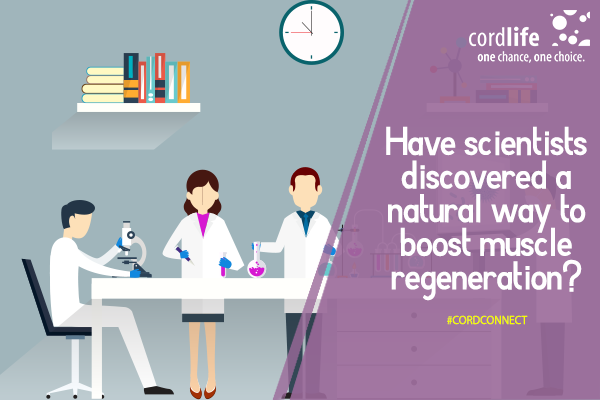Table of Contents
Many athletes take painkillers regularly after intense workout sessions. The reason being, any muscle injury, inflammation, soreness, stiffness and aches can be handled with these medicines. But a new study suggests that these anti-inflammatory non-steroidal drugs often harm the muscles rather than doing any good. A Stanford Medicine study supports this view and proposes a new study, based on the inflammatory component to treat muscle degeneration with muscle stem cells.
The stem cells in muscles are scattered across the skeletal muscle tissue. They remain inactive until they are divided by stimulation. When our muscles go through an injury or damage, an inflammatory component activates these muscle stem cells, so they start regenerating the tissue.
The team at Stanford suggests that a molecule, Prostaglandin E2 or PGE2, gets released when the muscle sends the inflammatory signal. This component stimulates the repairing process by aiming at the EP4 receptor, located on the surface of muscle stem cells. The muscle stem cells division is caused by the interaction between PGE2 and EP4, which leads to muscle tissue regeneration.
Dr. Helen Blau, the senior author of the study, said, “Traditionally, inflammation has been considered a natural, but sometimes harmful, response to injury. But we wondered whether there might be a component in the pro-inflammatory signaling cascade that also stimulated muscle repair. We found that a single exposure to prostaglandin E2 has a profound effect on the proliferation of muscle stem cells in living animals. We postulated that we could enhance muscle regeneration by simply augmenting this natural physiological process in existing stem cells already located along the muscle fiber.”
They have conducted a study on a mice model and it reveals that the PGE2 is increased by injuries and that in turn increases the expression of the EP4 receptor. This incident leads the team to the idea of treating the mice with PGE2 pulse, so they can stimulate the muscle stem cells to repair the damage.
Dr. Adelaida Palla, the co-first author explained, “When we gave mice a single shot of PGE2 directly to the muscle, it robustly affected muscle regeneration and even increased strength. Conversely, if we inhibited the ability of the muscle stem cells to respond to naturally produced PGE2 by blocking the expression of EP4 or by giving them a single dose of a nonsteroidal anti-inflammatory drug to suppress PGE2 production, the acquisition of strength was impeded.”
The research clearly shows that painkillers can make the situation worse. Additionally, it also suggests that the molecule; PGE2 can be the natural element to enhance muscle regeneration. Dr. Blau is hopeful that future studies will show more encouraging results with PGE2. “Our goal has always been to find regulators of human muscle stem cells that can be useful in regenerative medicine. It might be possible to repurpose this already FDA-approved drug for use in muscle. This could be a novel way to target existing stem cells in their native environment to help people with muscle injury or trauma, or even to combat natural aging,” added Dr. Blau.
